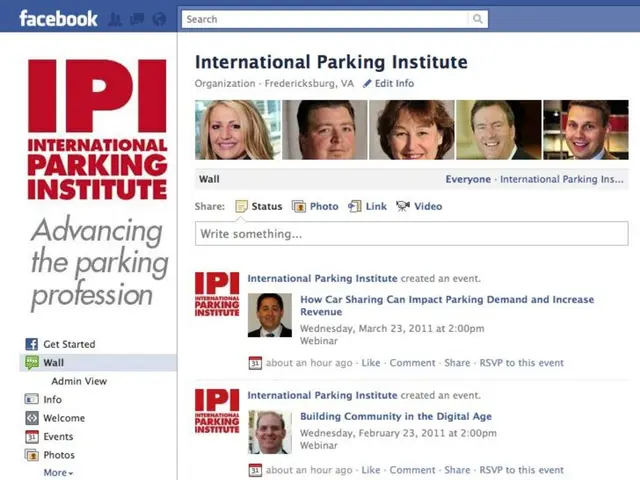Tax thresholds, unchanged since the 1980s - their current estimated values as of today
Inflation and UK Tax Thresholds: A Closer Look
Over the past few decades, inflation adjustments have played a significant role in shaping the UK's tax landscape, particularly in relation to various tax thresholds. The aim of these adjustments is to maintain the real value of these thresholds, preventing unintended tax increases due to bracket creep - a phenomenon where inflation pushes taxpayers into higher tax bands despite their real income not increasing.
However, the extent and frequency of these adjustments have varied, leading to shifts in the tax burden for middle and higher earners. There have been periods where the government froze or slowed the increase of thresholds below inflation rates, thereby increasing the tax burden in real terms.
The UK's inflation has been volatile over the years, with historic highs in the 1970s and more recent spikes. This variability creates challenges in adjusting tax thresholds timely and accurately, as inflation spikes can quickly erode real value if thresholds are not promptly indexed.
As of 2025, inflation is elevated compared to long-term averages, standing around 3.6% in June 2025 with spikes forecasted up to 4%. This ongoing inflationary pressure would typically prompt upward adjustments of thresholds to compensate, but specific decisions can lag or be politically constrained.
When thresholds lag inflation, more income is taxed at higher rates, effectively increasing average tax rates without changing legislated rates. This can disproportionately affect middle-income earners and complicate fiscal policy.
Some key points about inflation adjustment and UK tax thresholds include:
- Regular Indexation of Tax Thresholds: Many tax thresholds, like the personal allowance and income tax bands, are typically indexed to inflation or average earnings to maintain their real value.
- Impact of Inflation Volatility: The UK's inflation has fluctuated significantly over the past decades, creating challenges in adjusting tax thresholds timely and accurately.
- Recent Inflation Trends: Current elevated inflation levels generally prompt renewed consideration of threshold increases to keep pace.
Current State of UK Tax Thresholds
As a result of insufficient adjustments, several tax thresholds are now significantly lower than their inflation-adjusted values. For instance, the Income Tax basic rate threshold has been frozen since April 2021, and if adjusted for inflation, it should be £15,517 today. Similarly, the Income Tax additional rate threshold has been frozen since April 2010, and if adjusted for inflation, it should be £231,000 today.
The Savings allowance for basic rate taxpayers has been frozen since April 2016, and if adjusted for inflation, it should be £1,368 today. For higher rate taxpayers, the Savings allowance has been frozen since the same year, and if adjusted for inflation, it should be £684 today.
The personal savings allowance (PSA) for basic-rate taxpayers who move up to the higher-rate tax bracket at 40% will be halved, from £1,000 worth of savings interest tax-free each year to just £500.
Inheritance Tax thresholds have also been frozen, with the nil rate band frozen since April 2009, and if adjusted for inflation, it should be £517,007 today. The Residence nil rate band has been frozen since April 2020, and if adjusted for inflation, it should be £221,633 today.
The Inheritance Tax annual gifting allowance has been frozen at £3,000 since 1981, and if adjusted for inflation, it should be £11,529 today.
Implications for Taxpayers
The combination of frozen tax-free thresholds and the government's proposed IHT reforms to pensions, farms, and businesses means more estates will face bigger tax bills over the coming years. Additionally, the 60% income tax trap, which happens when your income exceeds £100,000, has been caught by frozen thresholds. In today's terms, taking inflation into account, the tax threshold could have moved from £100,000 to just over £150,000.
The Office for Budget Responsibility has pointed out that 3.5 million more individuals are expected to be pulled into the higher-rate tax band of 40% by 2028/29.
Conclusion
The ongoing inflationary pressure and the freeze on tax-free thresholds have significant implications for taxpayers in the UK. While the government's decision to extend the income tax threshold freeze until 2030 is expected to boost government coffers by billions of pounds, it is also likely to hurt working people and go against Labour's manifesto commitments, as Chancellor Rachel Reeves has noted. It is crucial for policymakers to consider the long-term effects of these decisions on the tax burden and fiscal equity in the UK.
- The regular indexation of tax thresholds, such as the personal allowance, is crucial to maintaining their real value in the context of personal finance and business.
- The prolonged freezing of tax-free thresholds, like the Income Tax basic rate threshold and the Savings allowance, disproportionately affects middle-income earners, potentially leading to increased tax burdens over time.
- While the freeze on tax-free thresholds may contribute to government revenue, it has significant implications for personal finance, particularly pension savings, inheritance, and the tax burden on working people in the UK.




